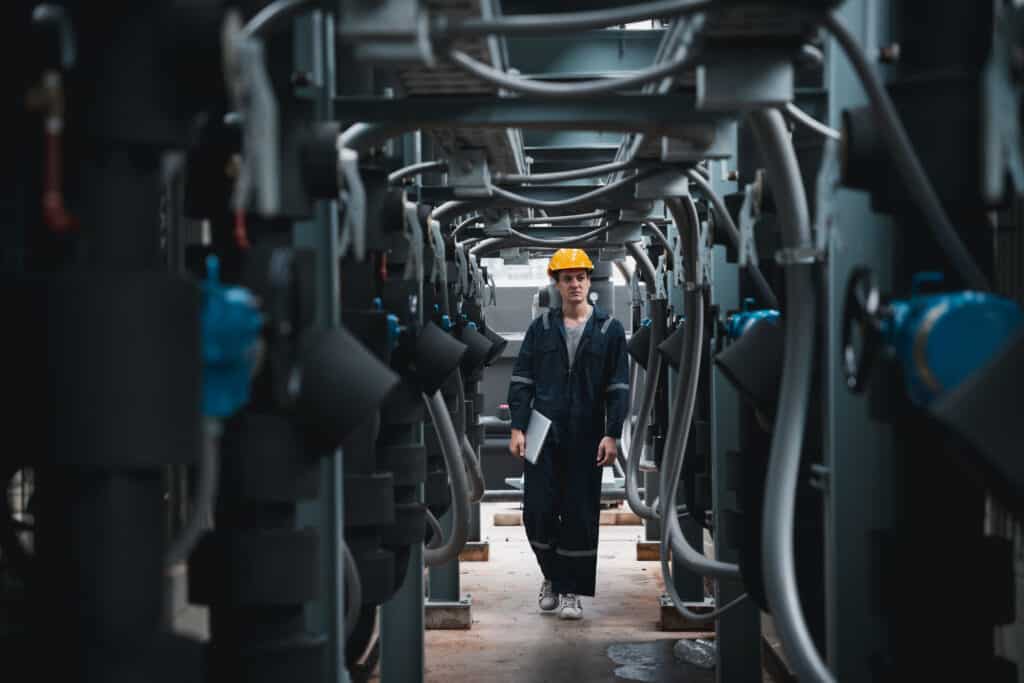Industrial Chillers
When Is It Time to Replace Your Chiller?
The chiller system is at the heart of cooling applications worldwide. However, like all mechanical systems, chillers are not immune to wear and tear. The decision to replace or maintain them is pivotal.
For manufacturers venturing into chiller sales, recognizing the signs and understanding the intricacies of chiller replacement can be a game-changer. Dive into this guide to gain invaluable insights into chiller longevity, performance, and the considerations for replacement.
Lifecycle Assessment of Chiller Systems
Every chiller comes with an expected operational lifespan. However, several factors can influence its longevity, such as load variations, how frequently it undergoes maintenance, and the environmental conditions in which it operates.
- Load Variations: The frequency and severity of load variations, which refer to changes in cooling demands, can impact the wear and tear on a chiller system.
- Maintenance Practices: Regular maintenance and upkeep play a crucial role in extending the operational lifespan of a chiller. Proper maintenance can help identify and address issues before they lead to significant damage.
- Environmental Conditions: The environmental conditions in which a chiller operates, such as temperature and humidity levels, can affect its performance and longevity.
Being cognizant of these factors can arm you with foresight and allow for timely interventions or chiller replacement.
Advanced Chiller Performance Analysis
Chiller efficiency can be gauged through various metrics, including COP, EER, IPLV, and SEER. By understanding these metrics and monitoring chiller data over time, you can trace the health of your chiller system.
- COP (Coefficient of Performance) offers insights into how effectively a chiller converts energy into cooling.
- EER (Energy Efficiency Ratio), particularly relevant for air-cooled chillers, provides clarity on energy efficiency under set conditions.
- IPLV (Integrated Part Load Value) gives a comprehensive efficiency assessment, encompassing various real-world operational load levels.
- SEER (Seasonal Energy Efficiency Ratio) evaluates the efficiency of systems throughout the cooling season.
Degradation of Chiller Components
A chiller’s efficiency isn’t solely about metrics; it’s intricately tied to the health of its core components: compressors, evaporators, condensers, and heat exchangers.
The deterioration of these components often correlates with declining chiller performance. Regularly inspecting these components can offer early signals, preventing prolonged inefficiencies.
Energy Consumption Patterns
An inexplicable rise in energy consumption can sometimes be a tell-tale sign of chiller inefficiency. By vigilantly tracking energy trends and deviations, you can often preempt more significant problems and pave the way for informed chiller replacement decisions.
Maintenance vs. Replacement Cost Analysis
Every chiller requires maintenance, but when do these costs outweigh the potential price of a new chiller? Analyzing the long-term cost-effectiveness can help determine when it’s more financially sound to opt for a chiller replacement.
This is best done by having a consistent maintenance schedule and relying on the suggestions of the technician conducting the maintenance.
Refrigerant Regulations and Compatibility
The chilling world isn’t static. Refrigerant regulations evolve, and with them, the demands on chiller operation. When faced with the choice between retrofitting older models or transitioning to new, compliant chillers, the latter often proves to be the more future-proof solution.
Technological Advancements and Efficiency Gains
The chiller industry is in constant flux, with new technologies emerging regularly. While retrofitting existing chillers with modern components might seem tempting, it’s often more feasible and beneficial in the long run to adopt the latest chiller models equipped with these advancements.
Environmental Considerations
As global environmental consciousness rises, the emissions and environmental impact of chillers come under scrutiny. Comparing the eco-footprint of older models with newer, environmentally-friendly chillers can make a strong case for replacement.
Integration with Building Management Systems (BMS)
The Building Management System (BMS) is the central nerve of modern infrastructure and ensures the chiller and other systems run in harmony. By gathering data, adjusting settings in real time, and optimizing performance, the BMS serves as a dynamic tool for energy savings and operational efficiency.
When considering chiller replacement, it’s crucial to evaluate the compatibility and benefits of integrating the new chiller with the existing BMS infrastructure.
Give Your Clients Access to Industry-Leading Chillers
From manufacturing to data centers, every industry has specific chiller needs. Explore an extensive range of chillers fit for any industry at KKT Chillers USA. Get a quote for a chiller today and offer competitive and tailored solutions to your clients.
